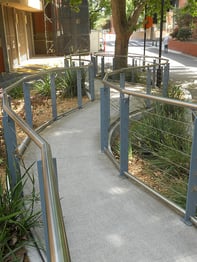Published on
Does Technology Boost Educational Effectiveness?

As we prepare learners with the skills needed for the 21st century, there is a greater desire to further integrate technology into our classrooms. Whether it’s a K-12 or college classroom, it’s rare to find an environment that does not integrate technology in some form or another. In some cases, online learning has replaced the physical classroom altogether. As educators, we owe it to ourselves and our students to harness these benefits. However, while technology offers significant advantages, simply integrating it as an alternative source of delivery or as another means for students to demonstrate their comprehension is not an effective practice.
Whether it’s asynchronous, synchronous or blended learning, we must remind ourselves that any form of learning technology should also be guided. Wopereis, Sloep and Poortman (2010) remind us these resources are ‘‘just’’ instruments and require “high-quality guided practice” from instructors. These instruments, combined with guidance, can “afford good instruction, practice and motivation” (p. 259). While technology can positively impact learning outcomes, it may be even more effective for some students if it’s instructor-led and integrated into a well-designed curriculum.
Technology is rapidly changing the educational environment and challenging students to adapt accordingly. It can frustrate students of different generations struggling to learn how to use a learning platform in addition to picking up the actual subject. Some may wonder, “Why should I waste time learning how to create a podcast when I could simply write the paper?”
It’s a valid question, especially if some students are finding themselves devoting more time to mastering the technology than to learning. We must not assume students who were raised using technology are always comfortable learning with these tools.
A past study by West et al. (2006) found that because of tools some students may not have experience using (e.g. blogs), those students may need more structure in their assignments. They also require direction on how mastering these tools can be valuable outside of their assignments. Students may also struggle with using online tools if an instructor neglects to “teach the conceptual basis of the tools,” West et al. say (p. 56). We must try and recognize when technology is limiting a learner’s ability and provide guidance or alternative measures to ensure he or she is grasping the curriculum. “Technology may mean little without appropriate objectives and goals for its use, structures for its application, trained and skillful deliverers, and clearly envisioned plans for evaluating its effectiveness,” authors Noeth and Volkov argue.
Educators are also tasked with providing students the skills they need to flourish in a highly competitive and technologically-based workplace. Many of the skills obtained through online classes are valuable professional skills. Students taught how to use multiple learning technologies effectively, such as creating podcasts and developing animations, have a competitive advantage over those who are simply using technology as a method of delivery in the online classroom. Technology in these multiple media increases our ability to incorporate a multi-modal approach to learning and helps students to acquire more advanced skills (Weir, 2008). Regardless of the subjects we teach, integrating technology gives our students the opportunity to not only learn the content, but also to develop skills useful beyond our classrooms. Technology, when integrated and balanced appropriately with the curriculum and with student needs, can make us more effective as educators.
– – – –
References
Richard J. Noeth and Boris B. Volkov, “Evaluating the Effectiveness of Technology in our Schools: ACT Policy Report,” 2004, accessed at http://www.act.org/research/policymakers/pdf/school_tech.pdf
Richard West, et al, “Reflections from the Introduction of Blogs and RSS feeds into a Preservice Instructional Technology Course.” TechTrends: Linking Research & Practice to Improve Learning, 50(4), August 2006, pp. 54-60.
Iwan Wopereis et al, “Weblogs as Instruments for Reflection on Action in Teacher Education.” Interactive Learning Environments, 18(3), October 2009, pp. 245-261.
Laila Weir, “Research review: Multimodal Learning through Media,” Edutopia, May 9, 2008, accessed at http://www.edutopia.org/multimodal-learning-teaching-methods-media



